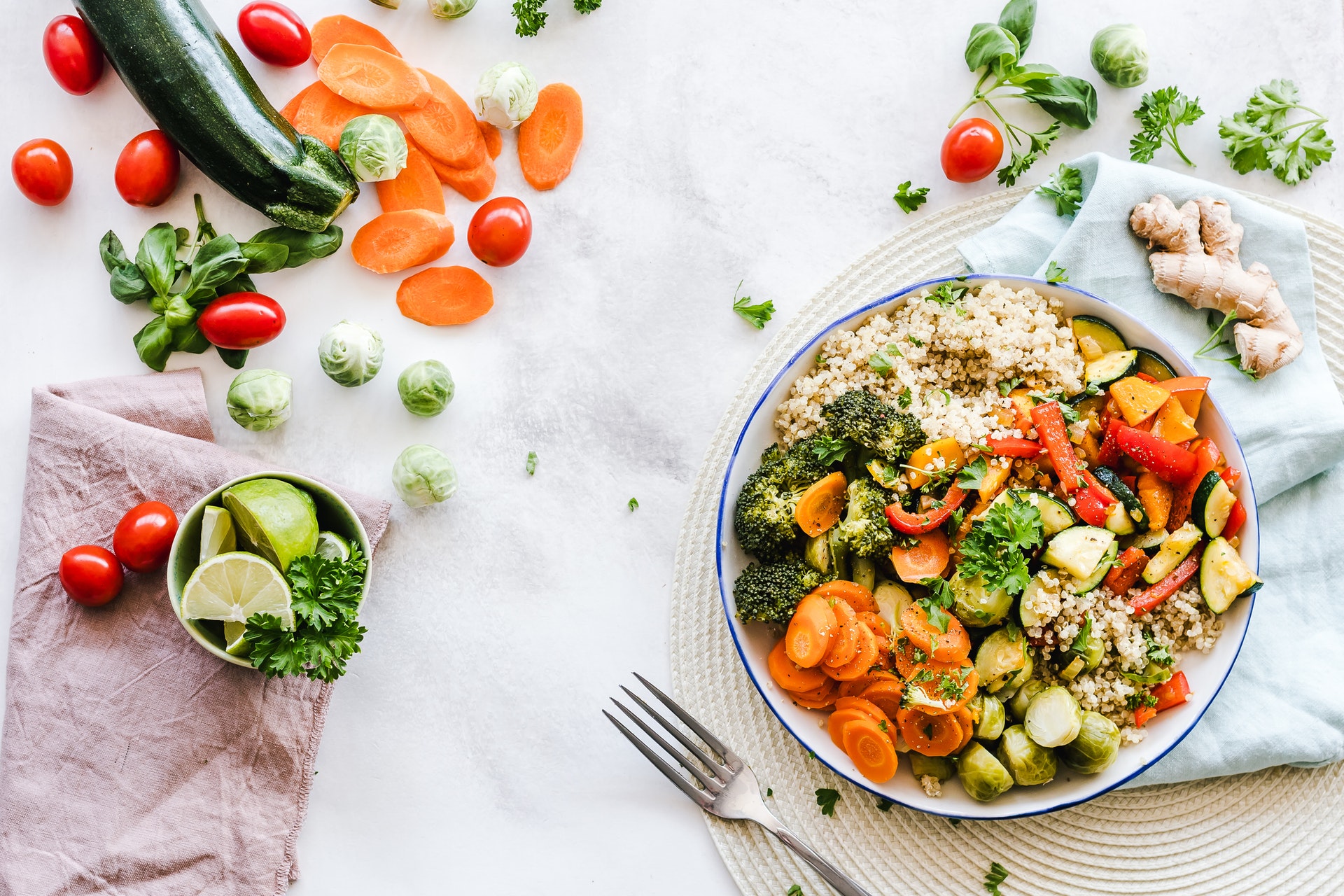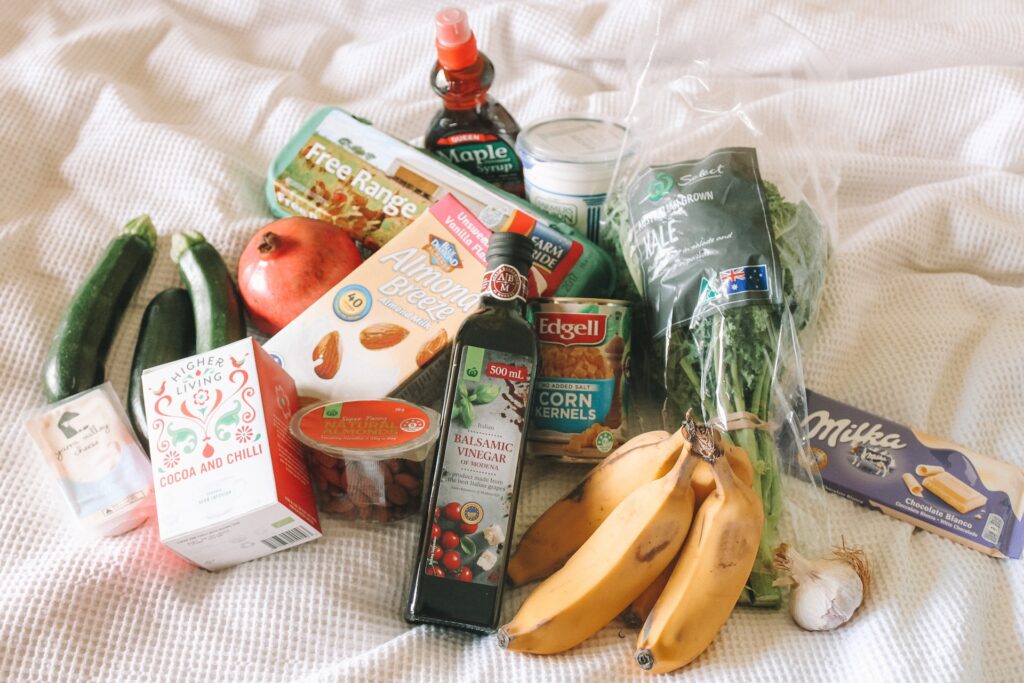
We are a reader-supported education publication. When you buy through links on our site, we may earn an affiliate commission to help us keep providing content.
It’s heartbreaking news, to be certain — but you shouldn’t live on a diet of ramen and pizza. Sure, they taste great, and you’ll get sufficient calories. However, fueling yourself through school means getting the right food to support your mental and physical health. How do you eat healthy in college with your grocery list?
How can you dine right on a starving student’s budget? Here’s a grocery list for how to eat healthy in college. Stock up today before heading back to your dorm.
1. Nut Butter
Your goal in college is to get protein as inexpensively as possible. Have you seen the price of many meat dishes these days? Besides, you might be experimenting with a vegan or vegetarian lifestyle, and nut butter fits the bill in both cases.
You can find varieties that work for you, even if you’re allergic to legumes or tree nuts. For example, tahini is a thin sauce made from sunflower seeds, or you could go right to sunflower butter for four times the vitamin E you’d get in the peanut variety.
You can also find peanut butter, hazelnut, cashew and even walnut butter. Each has a slightly different taste and texture — try them all to find your favorite. Of course, there’s Nutella if you like a bit of sweet chocolate with your hazelnut cream.
2. Whole Grain Crackers
All crackers are not created equal. You want to shun those made with white flour, even though they’re the staple snack given out in hospitals and school nurse’s offices everywhere. Why? Processing all-purpose flour creates a chemical byproduct called alloxan that destroys your pancreas. When you combine it with the quick-absorbing nature of white flour, it’s a recipe for diabetes.
However, you can find various seeded crackers that give you an antioxidant and protein punch — even if you’re allergic to gluten. Sprouted snacks are another option. Sprouting increases the nutrient availability significantly by breaking down the phytic acid that inhibits absorption, meaning your body soaks in more of the good stuff with each bite.
3. Yogurt
Have you eaten your probiotics today? If not, yogurt is a glorious source. It also provides healthy protein that’s plant-based if you choose a non-dairy version.
Your intestinal bacteria influence everything from your immune system to your mood. Probiotics consist of healthy types that replenish your intestinal flora, aiding digestion and keeping your body functioning at peak health.
4. Dipping Vegetables
Many Americans don’t get nearly enough vegetables in their diet, and it’s concerning. Some researchers even believe that a lack of micronutrients from fresh foods in our diet might fuel our divisive political discourse.
Increase your fresh veggie intake by stocking up on crudites. You don’t have to drop a bundle on the precut versions. It’s relatively easy to chop carrots and cauliflower into perfect snack-sized pieces.

5. Hummus
Hummus contains chickpeas, a fabulous source of plant-based protein. Adding a bit of this dip to your veggies will transform them into a late-night snack that keeps you full until the caff opens.
This healthy dip also comes in handy for other uses. Spread it on a tortilla and wrap up a few red pepper strips, cucumber slices and sprouts for a quick and tasty vegan lunch. Use it to make mini cracker sandwiches to sneak in your backpack for a mid-lecture pick-me-up.
6. Pasta Sauce
Pasta sauce can be a harried college student’s best friend. It’s quick, and it gets you at least one serving of veggies if you select a tomato or pesto-based version.
To make it last, pick a variety that can pull double duty. The right marinara works a mean side hustle as a pizza sauce — just add an English muffin and shredded cheese for a quick toaster oven meal.
7. Alternative Noodles
However, press pause before you pick up that box of traditional pasta. Yes, it’s cheap, but you should skip the white flour and choose a healthier alternative if you have a few extra pennies.
For example, red lentil or almond flour pasta contains oodles more protein to keep you powered through that all-nighter. Zucchini noodles or spiralized squash helps you increase your veggie content without resorting to yet another trip to the salad bar.
8. Air-Popped Popcorn
Late-night study sessions mean snacks. However, chips and processed treats contain oodles of calories and unhealthy ingredients that can pack on the dreaded freshman 15.
Instead, choose air-popped popcorn. You can dress this stuff up dozens of ways to give it flavor without adding unnecessary fat and calories. You’ll also avoid all the dubious oils manufacturers include with the bagged stuff.
9. Nuts and Seeds
Nut butter can give you protein, but you can also snack on the whole deal — and seeds. The latter might help balance your hormones if you’re female. Pepitas, sunflower and flax seeds contain lignans that create estrogen-like activity in the body, regulating your menstrual cycles.
Plus, these foods satisfy your craving for a salty snack without necessarily adding a hefty dose of sodium to your diet. Many varieties contain considerable amounts of potassium, helping flush away the bloat.
A Grocery List to Eat Healthy in College
The typical college student’s diet might contain plenty of calories — but lack vital nutrients. Stock your dorm room with inexpensive meals and snacks that give you the vitamins and minerals you need to survive long study sessions. Learn how to eat healthy in college with this grocery list.









